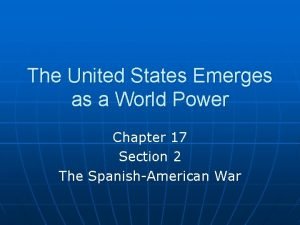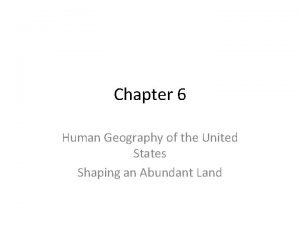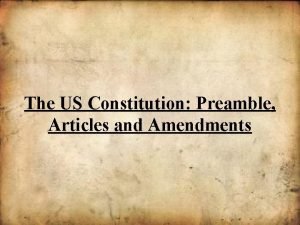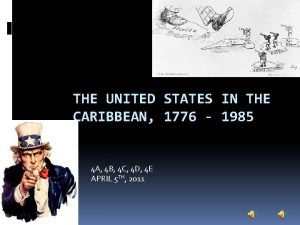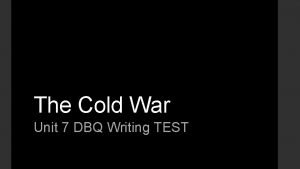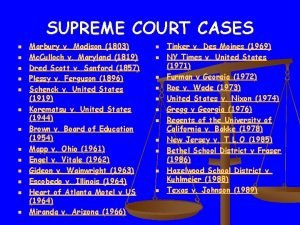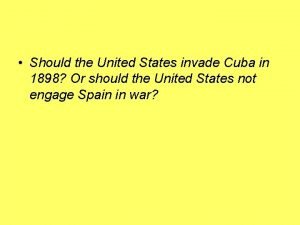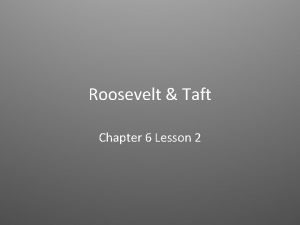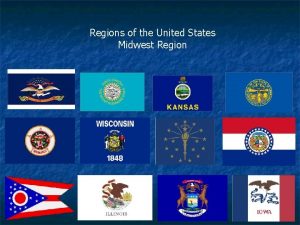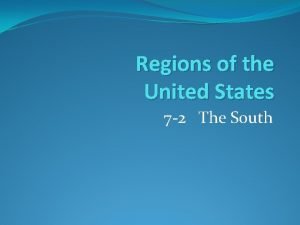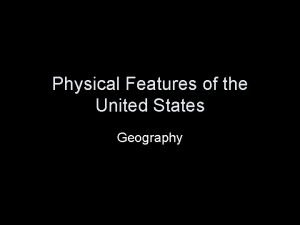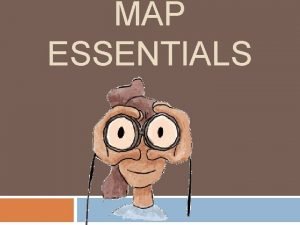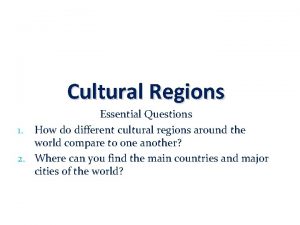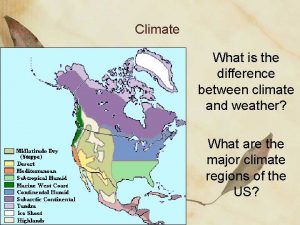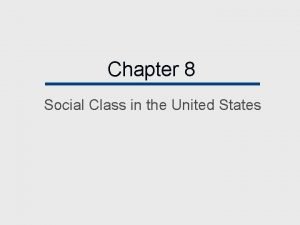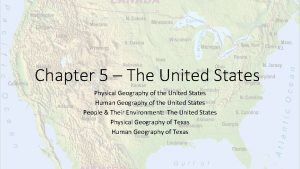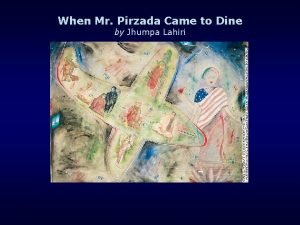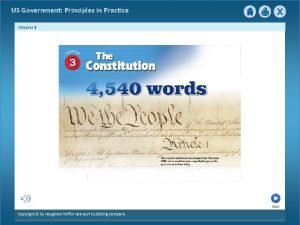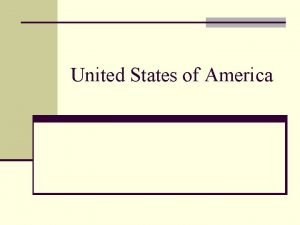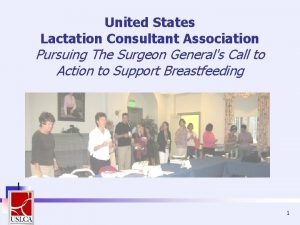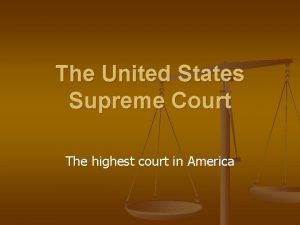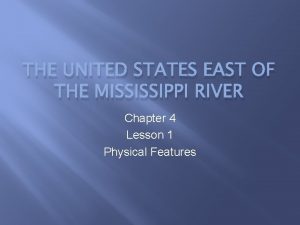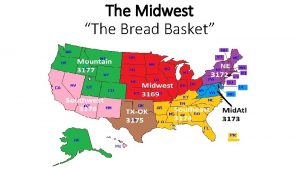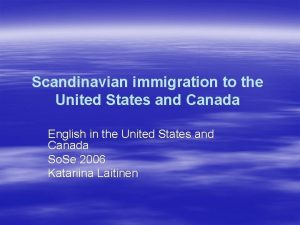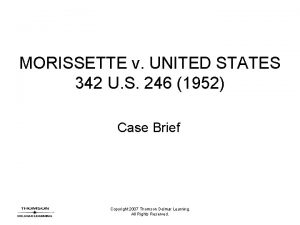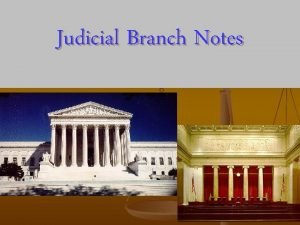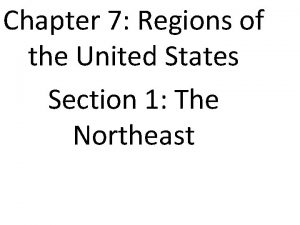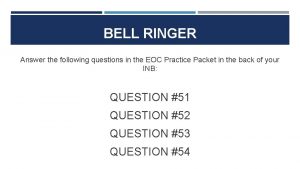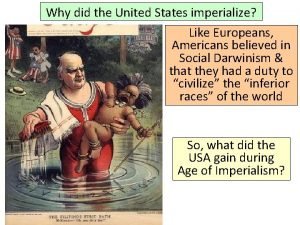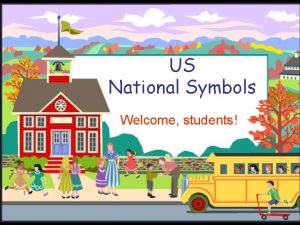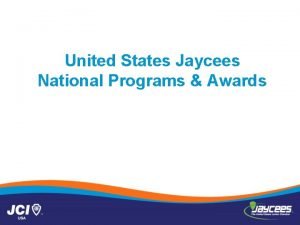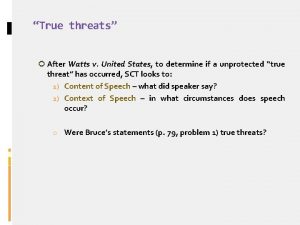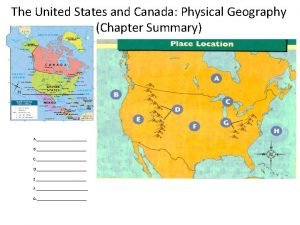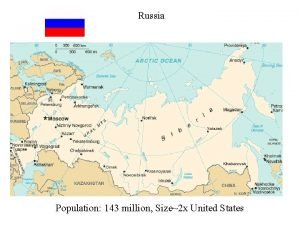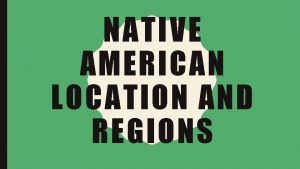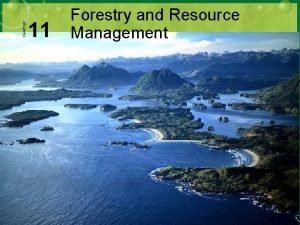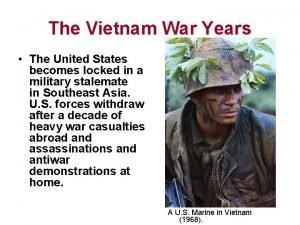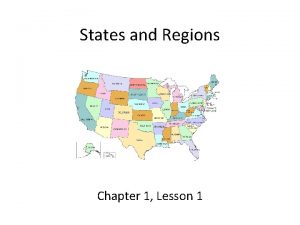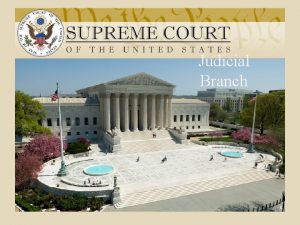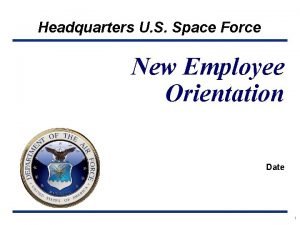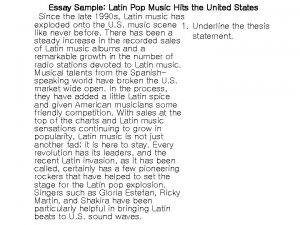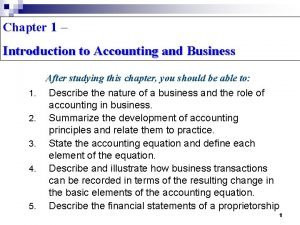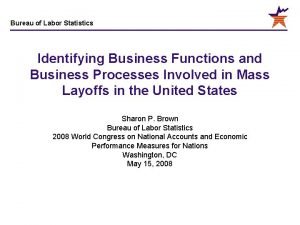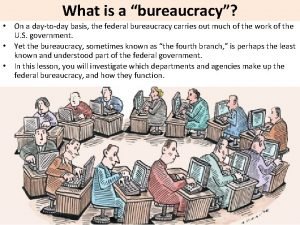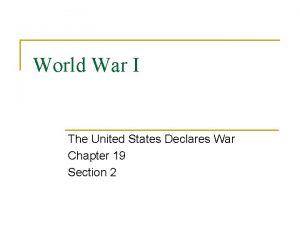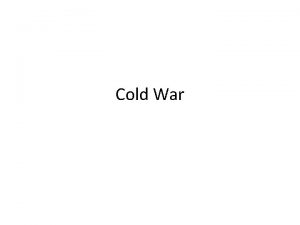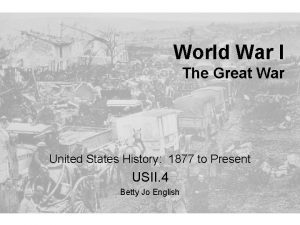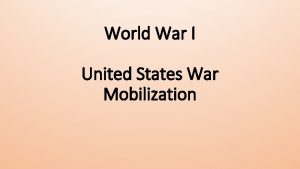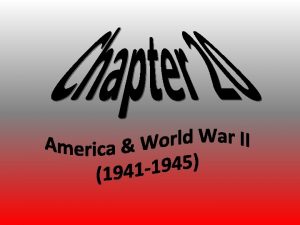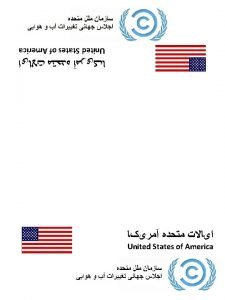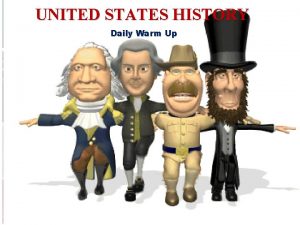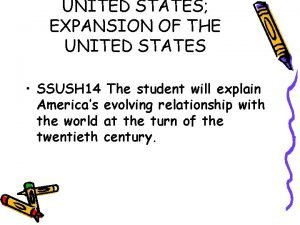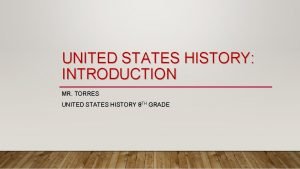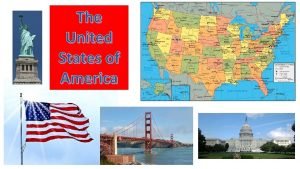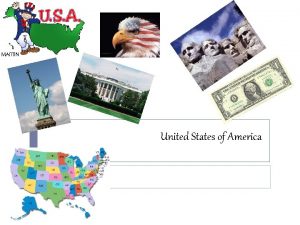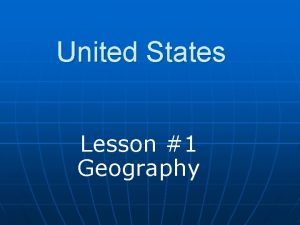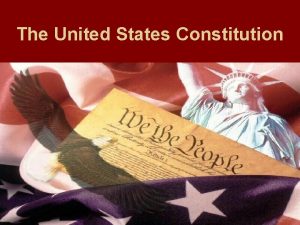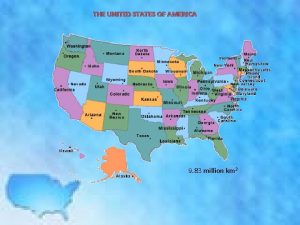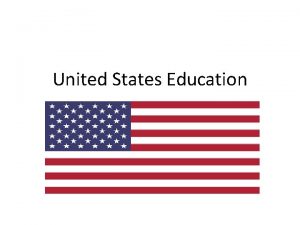CHAPTER 25 The United States in World War













































































- Slides: 77

CHAPTER 25 The United States in World War II Overview Time Lines SECTION 1 Mobilization on the Home Front SECTION 2 The War for Europe and North Africa SECTION 3 The War in the Pacific SECTION 4 The Impact of the War Chapter Assessment Transparencies

CHAPTER 25 The United States in World War II “We are now in this war. We are all in it—all the way. ” President Franklin Delano Roosevelt THEMES IN CHAPTER 25 Women in America Civil Rights Immigration and Migration The American Dream HOME

CHAPTER 25 The United States in World War II “We are now in this war. We are all in it—all the way. ” President Franklin Delano Roosevelt What do you know? Read the quote and answer the following: • What event prompted President Roosevelt to decide, “We are now in this war”? • What do you think being in the war “all the way” meant for Americans? • Do you think most Americans agreed with the president at this point? Why or why not? HOME

CHAPTER 25 Time Line The United States 1941 The Manhattan Project is established to develop an atomic bomb. Japan bombs Pearl Harbor, and the United States declares war on Japan. 1942 President Roosevelt signs an order forcing Japanese Americans into internment camps. 1943 The Allies force Italy to surrender. 1944 U. S. Marines take Iwo Jima. 1945 V-E Day ends the war in Europe. United States bombs Hiroshima and Nagasaki. HOME

CHAPTER 25 Time Line The World 1941 Germany invades Greece and Yugoslavia. Germany invades the Soviet Union. 1942 The Nazis develop the “final solution” for exterminating Jews. Hitler orders attack on Stalingrad. Allies invade North Africa. 1943 German soldiers surrender to Soviets at Stalingrad. 1944 Allies invade occupied Europe on June 6, D-Day. Allied soldiers begin liberating survivors of Hitler’s death camps. Nazi retreat begins after Battle of the Bulge. 1945 Roosevelt, Churchill, and Stalin meet at Yalta. HOME

SECTION 1 Mobilization on the Home Front Learn About Americans’ responses to the Japanese attack on Pearl Harbor. To Understand how the United States mobilizes its human and industrial resources to fight on two fronts. HOME

SECTION 1 Mobilization on the Home Front Key Idea The United States enters the war and mobilizes its citizens and resources to give its allies unprecedented military and industrial support. HOME

Section 1: Mobilizing for Defense Americans Join the War Effort: n n n 5 Million volunteers 10 Million drafted General Marshall forms Women’s Auxiliary Army Corps (WAAC) May 1942 Noncombat positions n n African Americans not able to have combat positions until final year of war Mexican, Chinese, Native, & Japanese Americans Japanese and Chinese served mostly in Pacific…Spies



A Production Miracle Factories convert to war production Car factories retooled to produce tanks, planes, boats, and command cars Mechanical pencils now bomb parts Bedspread now mosquito net Soft-drink company now filled shells with explosives n Henry Kaiser built seven shipyards that produces cargo ships, tankers, troop transports, and aircraft carriers Labor Contributions…nation did not have enough workers to meet the needs of both the military and industry Women and Minorities n 1941 William Randolph: American labor and civil rights leader Called for a March on Washington, D. C. n Roosevelt makes a statement to all employers and labor unions to provide participation of all workers in defense industries regardless of race, creed, color, or national origin



Production Miracle Cont… Mobilization of Scientists Roosevelt created the OSRD (Office of Scientific Research and Development) which developed improvements in sonar and radar, pesticides, and “miracle drugs” (penicillin). It also launched the Manhattan Project: created the atomic bomb n Albert Einstein wrote Roosevelt a letter informing him of German discovery in 1939 Germans scientist successful in splitting uranium atoms, releasing an enormous amount of energy





The Federal Government Takes Control Chart on Page 773 Rationing: establishing fixed allotments of goods deemed essential for the military n n Meat, shoes, sugar, coffee, and gas Gas in the West…more isolated living Would America today be able or allow Government to control this much of their lives?


SECTION 1 Mobilization on the Home Front HOME Section 1 Assessment SUMMARIZING In what ways did the United States prepare for war? establishment of OPA Selective Service draft Preparation for War 1940– 1941 conversion of industries to wartime production creation of OSRD employment of women in war industry

SECTION 1 Mobilization on the Home Front Section 1 Assessment INTERPRETING Why do you think President Roosevelt gave in to A. Philip Randolph’s demands for equal African-American participation in the war effort? THINK ABOUT • the impact of a large demonstration in Washington on Roosevelt’s popularity • the relationship between blacks and whites in 1941 HOME

SECTION 1 Mobilization on the Home Front Section 1 Assessment FORMING OPINIONS Do you think that President Roosevelt should have ordered the internment of Japanese Americans living on the West Coast? THINK ABOUT • the founding principles of the United States • the human costs of internment • the behavior of Japanese Americans • the risks Japanese Americans posed to U. S. security HOME

SECTION 2 The War for Europe and North Africa Learn About how the Allies coordinated the war effort. To Understand how they defeated Germany and Italy. HOME

SECTION 2 The War for Europe and North Africa Key Idea The United States, Great Britain, and the Soviet Union cooperate in the fight to defeat Germany and its allies. HOME

Section 2: The War for Europe and North Africa The US and Britain Join Forces n Churchill convinced FDR to strike Hitler first than turn to the Pacific-Japan The Battle of the Atlantic n Hitler ordered submarine raids along America’s east coast Prevent food and war materials from reaching Britain & Russia 7 months German wolf packs had destroyed a total of 681 Allied ships in the Atlantic Allies organize cargo ships into convoys n Same as WWI

The Eastern Front and the Mediterranean Battle of Stalingrad: Aug. 1942 -Jan. 1943 n n Stalingrad: a major industrial city on the Volga River Soviets able to surround city trapping Germans inside the city Soviets lost a total of 1. 1 million soldiers…more than US total in WWII After Stalingrad Soviets began and continued to move westward toward Germany Stalingrad was turning point of the war


The North African Front Stalin pleaded to open a “second front” in Western Europe…wanted an invasion across the English Channel…FDR and Churchill not confident to attempt an invasion on European soil Operation Torch: an invasion of Axis-controlled North Africa commanded by American General Dwight D. Eisenhower…Nov. 1942 Germany forces were led by General Rommel…known as the Desert Fox



The Italian Campaign Churchill suggests attacking Italy Allies capture Sicily in the summer of 1943 n n Italian government forces Mussolini to resign King Victor Emmanuel III had Mussolini arrested Hitler was not going to give up Italy easily n Rather fight in Italy than on home soil Allies defeat Axis at Anzio…Bloody Anzio Not able to fully free Italy until 1945 when Germany itself was about to surrender



Heroes in Combat 99 th Pursuit Squadron (Tuskegee Airmen) n All-black pilots who fought in Italy 92 nd Infantry Division n African American unit that in 6 months of fighting won 7 Legion of Merit awards, 65 silver stars, and 162 Bronze Stars 17 Mexican American soldiers were awarded the Congressional Medal of Honor 100 th Battalion n Consisted of 1, 300 Hawaiian Nisei: refers to American citizens whose parents had emigrated from Japan


The Allies Liberate Europe Operation Overlord: plan to invade France and free Western Europe from the Nazis n American General Eisenhower D-DAY: June 6, 1944 n n n Allies penetrated the beaches along the Normandy Coast…despite heavy losses they held the beachheads and began moving inland Set up a huge phantom army with its own headquarters and equipment at Dover…Hitler thought they would attack at Calais…shortest distance across English Channel General Bradley: unleashed massive air and land bombardment that opened a gap in the German line of defense that allowed General Patton and his Third Army to advance through 2 days later Paris was liberated By September 1944 Allies had freed France, Belgium, and Luxembourg FDR is elected to a 4 th Term in Nov. 1944…Harry Truman Vice


The Battle of the Bulge In October 1944 Americans captured first German town, Aachen Hitler responded with a desperate offensive n Hoped this move would split American and British troops and cut off supply lines German tanks drove 60 miles into Allied territory creating a bulge Germans captured 120 Americans…killed them Battle lasted a month…Germans forced out of Allied territory n n Didn’t seem like anything had changed Germans lost men and equipment that they could not replace…now Germany could no longer go on the offensive


Liberation of the Death Camps Soviets first to come upon a death camp n July 1944 came to Majdanek in Poland SS guards worked hard to bury and burn all evidence Soviets found a 1, 000 starving prisoners barely alive and a storehouse containing 800, 000 shoes Americans would later find Death Camps…both Americans and Soviets were shocked at their findings Unconditional Surrender n n n By April 1945 Soviet army had reached Berlin Hitler Killed himself on April 30 in order to ovoid capture…he order his body and his wife's body to be burned One week later Eisenhower accepted unconditional surrender of the Third Reich…May 8, 1945 Allies celebrated V-E Day-Victory in Europe Day FDR did not live to see V-E Day n n April 12, 1945 died from a stroke Harry S. Truman became 33 rd President




WWII in Europe

SECTION 2 The War for Europe and North Africa HOME Section 2 Assessment FOLLOWING CHRONOLOGICAL ORDER What were the major events influencing the fighting in Europe and Africa? February 2, 1943 Germans surrender at Stalingrad. December 22, 1941 Churchill and Roosevelt meet. May 1944 Battle of Anzio ends. May 1943 Last of Afrika Korps surrenders. July 1944 Russians liberate first death camp. June 6, 1944 Allies invade Normandy. April 1945 Hitler commits suicide. January 1945 Germany loses Battle of the Bulge. May 8, 1945 Germany surrenders.

SECTION 2 The War for Europe and North Africa Section 2 Assessment HYPOTHESIZING What do you think might have happened if the Nazis had defeated the Soviets at Stalingrad? THINK ABOUT • the military significance of a German victory • the psychological impact of a German loss HOME

SECTION 2 The War for Europe and North Africa Section 2 Assessment FORMING OPINIONS Do you agree with the decision by Roosevelt and Churchill to require unconditional surrender by the Axis Powers? Why or why not? THINK ABOUT • the advantages of defeating a foe decisively • the advantages of ending a war quickly • how other conflicts, such as the Civil War and World War I, ended HOME

SECTION 3 The War in the Pacific Learn About U. S. strategy in the Pacific. To Understand how the Allies defeated Japan and ended World War II. HOME

SECTION 3 The War in the Pacific Key Idea America wages an aggressive military campaign against Japan in the Pacific islands and finally ends the war. HOME

Section 3: The War in the Pacific Japan Advances n In the 6 months after Pearl Harbor Japan had conquered an empire in the Pacific (p. 786) Philippines: General Douglas Mac. Arthur and troops forced to leave. . . “I shall return” Doolittle’s Raid n April 1942 Doolittle led 16 bombers in an attack on Tokyo…lifted American spirits…Allies begin to turn things around in the Pacific Battle of the Coral Sea n May 1942 Allies successful in stopping Japan’s advance towards Australia…first time since Pearl Harbor that a Japanese invasion had been stopped The Battle of Midway n n n Midway: a strategic island which lies northwest of Hawaii Americans broke Japanese code…allowed Americas to destroy 4 aircraft carriers, a cruiser, 250 planes After this the Allies were able to begin “island hopping”…island by island Allies won back territory and moved closer to Japan


The Allies Go on the Offensive August 1942 first Allied offensive n n Guadalcanal…Japan’s first defeat on land October 1944 Mac. Arthur returns to the Philippines…Leyte Islands The Japanese Defense n n Japan threw entire fleet into Leyte Gulf by Philippine Islands Kamikaze: suicide planes 424 Kamikaze planes sunk 16 ships and damaged 80 in the Philippines n Battle of Leyte Gulf was a disaster for Japan Lost 3 battleships, 4 aircraft carriers, 13 cruisers, 500 planes Navy was crippled and no longer a factor

Iwo Jima & Okinawa Iwo Jima was crucial to est. a base which bombers could reach Japan n 20, 700 Japanese made it most protected place on earth…all but 200 died as US took island (6, 000 Americans died) Okinawa: last obstacle to island of Japan n n 1, 900 Kamikaze attacks sinking 30 ships 3 month battle ended with 7, 600 American lives lost and 110, 000 Japanese lives lost Churchill predicted that 1 million American lives would be lost and ½ a million British lives


The Atomic Bomb Ends the War Oppenhiemer: lead scientists in the Manhattan Project US warned Japan to surrender or face utter destruction n n Aug 6, 1945 atomic bomb dropped on Hiroshima 3 days later 2 nd bomb was dropped on Nagasaki By the end of the year an estimated 200, 000 people had died as a result of injuries and radiation poisoning Point/Counterpoint Page 791 September 2, 1945 Japan surrendered on the US battleship Missouri in Tokyo Bay




Rebuilding Begins Yalta Conference: Feb. 1945 the “Big 3” met in city of Yalta in the Soviet Union to discuss the fate of Germany and the postwar world n n Stalin wanted Germany to pay…FDR wanted Stalin’s help in the Pacific and wanted his support for the United Nations Stalin does not live up to the promises he makes Nuremberg War Trials: trials of Hitler’s most trusted party officials, government ministers, military leaders, and powerful industrialists n n n 12 of 24 were sentenced to death In later trials another 200 Nazis were found guilty of war crimes Individuals are responsible for their own actions even in times of war

The Occupation of Japan US occupied Japan for 7 years after war under command of Mac. Arthur n n 1, 100 Japanese were arrested and tried for crimes against civilians and prisoners of war… 7 were sentenced to death including Prime Minister Hideki Tojo Mac. Arthur called for a new constitution that provided for woman suffrage and guaranteed basic freedoms Japan’s constitution to this day is known as the Mac. Arthur Constitution

SECTION 3 The War in the Pacific SUMMARIZING HOME Section 3 Assessment 3 What was the significance of some key military actions in the Pacific during World War II? MILITARY ACTION SIGNIFICANCE Philippines Japanese victory destroyed myth of white supremacy in Asia. Tokyo American bombing lifted American spirits. Midway Americans damaged Japanese air power by destroying aircraft carriers. Leyte Gulf Reduced Japanese navy to minor role. Okinawa American victory allowed attack on Japan. Hiroshima America became first country to use atomic bomb. Nagasaki Caused Japan to surrender.

SECTION 3 The War in the Pacific Section 3 Assessment 3 DRAWING CONCLUSIONS How was the United States able to defeat the Japanese in the Pacific theater? THINK ABOUT • the geography of the region • the role of technology in the battles • the strategies used by each side HOME

SECTION 3 The War in the Pacific Section 3 Assessment EVALUATING Do you think that it is legitimate to hold people accountable for crimes committed during wartime? Why or why not? THINK ABOUT • the laws that govern human behavior • the likelihood of conducting a fair trial • the behavior of soldiers, politicians, and civilians during war HOME

SECTION 4 The Impact of the War HOME Learn About the impact of the war on life at home. To Understand the social and economic changes that helped reshape postwar America.

SECTION 4 The Impact of the War Key Idea Americans begin to adjust to new economic opportunities and continuing social problems after World War II. HOME

Section 4: The Home Front Opportunity & Adjustment n By end of WWII economic and military power Population Shifts n n Towns and cities with defense plants saw populations raise two to three times African Americans left the South for factory jobs in the North Social Adjustments n n During the war mothers became single parents and women took jobs outside the home. GI Bill of Rights: Passed by Congress to ease the transition of returning servicemen to civilian life

Discrimination & Reaction Civil Rights Protest n James Farmer founded the Congress of Racial Equality (CORE) to confront urban segregation in the North African American migrants moved into already overcrowded cities…created hostilities n n Detroit riot in 1943…FDR sent in federal troops… 34 dead Tension in LA Summer of 1943 Zoot-suit riots…style of dress adopted by Mexican-American youths as a symbol of their rebellion against tradition Riots began when 11 sailors reported that they had been attacked by zoot-suit-wearing Mexican Americans…triggered violent attacks that lasted a week

These youths, one stripped of all his clothes, the others badly beaten, fell victim to ranging bands of policemen who scoured the streets in Los Angeles June 7, 1943.

Internment of Japanese Americans When war began 120, 000 Japanese Americans live in the US February 9, 1942 FDR signed an order removing people of Japanese ancestry from California and parts of Washington, Oregon, and Arizona on the need of what he said was national security 110, 000 Japanese Americans were sent to ten “relocation camps” (prison camps) Japanese American Citizens League (JACL) wanted compensation n n 1965 Congress authorized $38 million… 1/10 of actual losses 1990 $20, 000 to every Japanese American sent to a relocation camp accompanied with an apology letter from President Bush



SECTION 4 The Impact of the War HOME Section 4 Assessment SUMMARIZING What were some advances and problems in the economy and civil rights during World War II? ECONOMY ADVANCES PROBLEMS low unemployment; rising crop prices; opportunity for women shortages of housing and food more equality in the military; CIVIL RIGHTS founding of CORE segregation; discrimination; race riots in Detroit and Los Angeles; internment of Japanese Americans

SECTION 4 The Impact of the War Section 4 Assessment DRAWING CONCLUSIONS What effect do you think World War II had on traditional attitudes and beliefs held by Americans? THINK ABOUT • the role of women in families and the economy • the relationship between the races • the impact of the federal government on society HOME

SECTION 4 The Impact of the War Section 4 Assessment COMPARING How were experiences of African Americans, Mexican Americans, and Japanese Americans similar during World War II? THINK ABOUT • the role of each group in the military • governmental actions toward each group • wartime changes that affected minority groups HOME

Chapter 25 Assessment 1. How did the U. S. military reflect the diversity of American society during World War II? 2. How did World War II affect life on the home front? 3. How did federal government actions influence civilian life during World War II? 4. How did the Allies win control of the Atlantic Ocean between 1941 and 1943? 5. What was the significance of the Battle of Stalingrad? HOME

Chapter 25 Assessment 6. How did the Battle of the Bulge signal the beginning of the end of World War II in Europe? 7. What strategy did the United States use in fighting the Japanese in the Pacific? 8. Why did President Truman decide to use atomic weapons on Hiroshima and Nagasaki? 9. How did the U. S. economy change during World War II? 10. What events show the persistence of racial tension during World War II? HOME
 United states acquisitions and annexations 1857-1904
United states acquisitions and annexations 1857-1904 Chapter 2 free enterprise in the united states answer key
Chapter 2 free enterprise in the united states answer key Chapter 6 human geography of the united states
Chapter 6 human geography of the united states States west of the mississippi
States west of the mississippi Chapter 30 the war to end war
Chapter 30 the war to end war Chapter 30 the war to end war
Chapter 30 the war to end war Was the united states on the axis powers or allied powers?
Was the united states on the axis powers or allied powers? Settlement patterns
Settlement patterns 36 30 line
36 30 line National premier soccer league
National premier soccer league United states v. nixon significance
United states v. nixon significance United states student association
United states student association The united states ought to provide a universal basic income
The united states ought to provide a universal basic income The preamble of the constitution
The preamble of the constitution The united states in the caribbean 1776 to 1985
The united states in the caribbean 1776 to 1985 Southeast region physical features
Southeast region physical features Expansion of the united states of america 1607 to 1853 map
Expansion of the united states of america 1607 to 1853 map How does nicholas novikov describe the united states
How does nicholas novikov describe the united states Florida cession date acquired
Florida cession date acquired Awake united states date and author
Awake united states date and author Mapp v ohio
Mapp v ohio Why did the united states invade cuba in 1898?
Why did the united states invade cuba in 1898? Guided reading activity lesson 2 roosevelt and taft
Guided reading activity lesson 2 roosevelt and taft Nnn
Nnn 7 regions of the united states
7 regions of the united states The united states is the greatest buyer positive degree
The united states is the greatest buyer positive degree United states and canada physical map
United states and canada physical map United states physical geography
United states physical geography 0 degree latitude
0 degree latitude North south east west in our calm objective opinion
North south east west in our calm objective opinion Perceptual regions of the united states
Perceptual regions of the united states Where do clowns originate from
Where do clowns originate from Subtropical united states
Subtropical united states What are the social classes in the united states
What are the social classes in the united states Physical geography of the united states
Physical geography of the united states Ibn-tamas v. united states
Ibn-tamas v. united states When mr pirzada came to dine reading check answers
When mr pirzada came to dine reading check answers United states government: principles in practice answers
United states government: principles in practice answers What is the geographical position of the united states
What is the geographical position of the united states United states lactation consultant association
United states lactation consultant association Gideon v wainwright significance
Gideon v wainwright significance The united states east of the mississippi river lesson 2
The united states east of the mississippi river lesson 2 Breadbasket states
Breadbasket states Immigration to the united states
Immigration to the united states United states v. cruikshank apush
United states v. cruikshank apush Morisette v. united states
Morisette v. united states Us land acquisition map
Us land acquisition map Judicial branch
Judicial branch North south east west in our calm objective opinion
North south east west in our calm objective opinion Yosemite sam confederate
Yosemite sam confederate How did these events affect the united states
How did these events affect the united states Why did the united states imperialize
Why did the united states imperialize Usa national symbols
Usa national symbols United states jaycees
United states jaycees Uscdi
Uscdi Buffalo county sd population pyramid
Buffalo county sd population pyramid Watts v united states
Watts v united states The physical geography of the united states and canada
The physical geography of the united states and canada United states
United states Native american tribes in the united states
Native american tribes in the united states Melting pot
Melting pot The united states has a mixed economy true or false
The united states has a mixed economy true or false Collectivism in the united states
Collectivism in the united states Forestry and resource management chapter 11 answers
Forestry and resource management chapter 11 answers United states bicycle route system
United states bicycle route system Thomas malthus concluded that
Thomas malthus concluded that United states vietnam
United states vietnam United states bureau of labor statistics
United states bureau of labor statistics 5 regions of united states
5 regions of united states Kentucky primary care association
Kentucky primary care association United states judicial branch
United states judicial branch United states space force logo
United states space force logo United states history and government regents
United states history and government regents Pop music essay
Pop music essay Comprises 70% of business entities in the united states
Comprises 70% of business entities in the united states United states bureau of labor statistics
United states bureau of labor statistics Help wanted ad for president
Help wanted ad for president What is the us bureaucracy
What is the us bureaucracy
